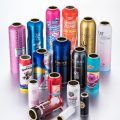Scientific guidance on how materials recycling facilities (MRFs) can combat all the hazards caused by gas cylinders and aerosols is expected to see the light of day next year, the Waste Industry Health and Safety Forum (WISH) said, according to Materials Recycling World (MRW).
Its work has been hampered by a lake of data on MRF accidents caused by explosions when these containers enter the wrong waste streams, but the guidance is likely to focus on baler robustness, MRW reported.
For Chris Jones, president of WISH, the situation can become worrisome: “We want to understand why some balers survive explosions and others don’t. Some seem to be built more robustly and take this risk into account, but there are no specific standards and that’s something our work will try to address. Some seem to be built more robustly and take this risk into account, but there are no specific standards and that is something our work will try to address.”
Geoff Smallwood, chairman of the WISH working group noted in this regard that the problem stemmed from discarded aerosols and gas canisters that still contained some flammable material, as opposed to those that were completely empty.
Christian Nodal added: “We’ll start with balers because if you get aerosols in some of them, like Michael Caine, it will ‘blow the doors off,’ but in others the energy will just increase, it triggered a series of changes in the gas tanks.” He also stressed, “Packers have access doors and a lot depends on how robust the locks and hinges are. If they are not, then you blow them through MRF when there is an explosion. Even if energy goes up, that can still cause damage.”
Jones further stressed that the danger arose from the phase-out of CFCs as aerosol propellants in the 1900s due to concerns that they damage the ozone layer. In their place came butane and hexane as propellants, both of which are flammable, a danger that increases considerably when large quantities of aerosols can be grouped together in an MRF.
Engineer Smallwood reiterated that there was little reliable data on MRF explosions and their causes, although he had some to analyze provided by the Environmental Services Association. “There may be some patterns, for example, you have more problems with gas cylinders in the Lake District than in central London because people use them for camping,” he said in this regard, adding that “some people think there is a peak at the end of winter when people throw away de-icing sprays or when there are a lot of commercial premises that use them, such as hairdressers.”
Smallwood argues that there is a need to better educate the public about the removal of hazardous boats found in ports and operators to spot potentially dangerous boats. He added that “There have even been cases of deaths. The main danger is when many cans are grouped together as one, so it increases the amount of gas in one place if you have 50-100 cans together.”
Bolsover District Council is among those who have warned the public not to place used gas canisters in household waste garbage cans. He said, “Even when emptied, these canisters can contain explosive material that can cause fires in waste collection vehicles and injuries to workers involved in waste disposal processes.”














